Hi friends,
I’m gonna be honest with y’all: Writing about food right now feels very…trivial. Things are heavy with COVID, with climate crises, with friends and family constantly fighting online—and now it’s looking like South Louisiana will be hit with a hurricane over the weekend.
All of this has reminded me repeatedly of chemo and the recovery period after, when optimism and despair merged daily, swinging sometimes violently between a sense of physical relief and deep depression. So many friends have experienced similar oscillations over the last 18 months, but lately I rarely hear any sense of relief in their voices; many of us are simply burned out or nearing capacity and unsure of how we reset/recharge/reconnect. And so, as trivial as it may seem, we circle back to food—for nourishment, for inspiration, and for community. That’s what I’m gonna keep telling myself, at least.
Today, we’re talking about pawpaws with Blaise Pezold, who serves as the coastal and environmental program manager for Docville Farm. But first: a travel story.
Welcome to the Murder Motel
A few weeks back, Rémy and I traveled to Asheville to visit with my family—my brother (Jason) recently moved there with his girlfriend (Robyn) for medical residency (showoff), and it’s an easy drive for rest of the family from Greensboro. We had planned to stay with Jason and Robyn, but I learned of a COVID exposure the day before leaving. We decided to play it safe and book an Airbnb, along with taking other precautions to protect the family, including keeping activities to outdoor spaces and for Rémy and me to stay masked around others.
Because this is tourist season in Asheville, our options for lodging on a budget were limited, but we both got excited when I found a listing for an RV parked on a farm about 30 minutes outside of town. It was cheap, looked peaceful, and boasted a view filled with goats and alpacas. The farm itself looked promising when we drove up—it was serene, and our RV was parked at the bottom of a hill, in a shady spot away from others, looking out onto a pasture filled with all sorts of furry critters. However: What once would have been a queen bed in the back of that old International RV had been converted to two twins, each draped in Finding Nemo comforters and separated by a nightstand (the listing simply stated how many people the space would sleep and didn’t have a photo of the back room). Strike one. We dropped our stuff and then headed to dinner, returning late that night to find that no one had turned the water on, and when I traced the line and opened the well, what ran through the pipes was very, very brown. Strike two. Then, around 2:30 a.m., I awoke to the sound of the door to the RV closing, as another person—a very kind, but very confused fella—walked out, wondering why our stuff was strewn about the RV that he had also booked for the night. Strike three.
We eventually fell back to sleep, but not before Rémy could take another look at hotel availability and secure a room at what we thought was a “boutique” motel remodel—The Asheville Inn. At breakfast, after packing up everything and leaving the memory of the farm behind us, we learned that the “inn” was previously nicknamed Murder Motel, and after posting a photo of our room, Rémy heard from a friend who had once awoken there covered in fleas. Thankfully our experience was fine—fairly positive, even, considering the reviews we hadn’t read at 3:00 in the morning. But the kicker of the trip is that, on our last day, I started to show symptoms of COVID, and broke out in a fever just a few hours before we got in the car to drive home. I tested positive with a breakthrough case late that afternoon.
I spent the following 10 days in quarantine in our guest room, rotating through a very strange mix of symptoms—all manageable, just not comfortable. Aside from that first night of fever and a deep, chesty smoker’s cough, I was mostly just mentally exhausted/physically restless. The only way I’ve found to describe the combined symptoms is that I felt like I had ripped a bong packed with very strong sativa, before taking a spin class, inside of a sauna. After about six days of that, most of my symptoms cleared, and I’m now back to 90/95% of my energy, with my sense of smell and ability to focus still lagging a bit behind.
Sidenote: If telling you all of this sounds like a discouragement from getting the vaccine, I’ll add here that two other breakthrough cases came from that same exposure, both with much milder symptoms, but the the person who transmitted it to all of us ended up in the hospital for treatment; he had not been vaccinated. But that’s not why I’m telling you this story. No, I’m rambling through all of this because, while on a walk with the family along the French Broad River in Asheville, I spotted a familiar leaf, and under its canopy a mostly forgotten fruit: a cluster of pawpaws. I picked a few to bring to Blaise, who has been studying and cultivating this fruit for several years now.
Fresh out of quarantine, I stopped by to see Blaise at Docville Farm, to drop off a bag of now-overripe fruit, and to learn more about his pawpaw quest.
A Visit to the Pawpaw Palace
A few weeks after I moved to NOLA in 2018, a friend invited me to an event at Crevasse 22 in St. Bernard, where Blaise Pezold was leading a foraging tour. I don’t remember exactly how pawpaws came up, but I knew what they were, and I think that was all that was needed to get an invitation to join Blaise on a foraging adventure a few weeks later. He was in need of seed samples to promote diversity in a small crop he was cultivating, and had heard of trees in a couple spots near Lafayette and up near Chicot State Park.
For those not familiar, pawpaws are a custardy fruit with large seeds and a skin not unlike that of some avocado varieties. The texture and flavor are often described as a combination of banana and mango, but unlike those fruits, pawpaws are native to the U.S. and have been found in at least 26 states, all the way from the Deep South up through the Rust Belt, even up to the Canadian border. If you’re reading this and wondering why you’ve never heard of them, or tasted one, Blaise offers a few theories. For one, we’ve killed off most of the creatures large enough to eat a pawpaw and digest its seeds, which would have been a natural way for the trees to propagate. We also pushed out (and killed off) the indigenous people who have historically been familiar with this fruit along with other native plants and vegetation. “A different explanation,” Blaise tells me, is that pawpaws “fell out of fashion with one generation because of the rise of the domestic banana—which replaced them as the type of fruit that you would eat.” Pawpaws are also extremely seasonal, and not as easy to ship as bananas, so really we just, well, forgot about them.
Blaise and I had limited success foraging three years ago, but in the time since, he’s traded seeds and cultivated many samples from throughout Louisiana, Mississippi, Missouri, Arkansas, and now North Carolina. At Docville, he shows me four common cultivars growing in a greenhouse, then takes me to a screened structure filled mostly with citrus trees, but which he’s dubbed the “Pawpaw Palace.”
Blaise tells me that there are two species of pawpaw native to Louisiana: asimina parviflora (known as “small flower”) and asimina triloba. Within those species, people have bred countless cultivars, many of them named after their growers, but Neal Peterson—who Blaise calls the godfather of pawpaws—has taken to naming his cultivars after indigenous waterways found near the trees he harvests. “I thought that was a really cool idea,” Blaise explains, so he’s built on the idea to name his in a similar fashion—after waterways, but also after indigenous tribes and places, as well as Creole or Black communities in the area. It’s an acknowledgement of the people and cultures who have inhabited Louisiana long before it was colonized or developed.
I ask Blaise why he’s so interested in pawpaws. “One,” he explains, “they're delicious. Two, it’s North America’s largest [native] fruit, but not many people know what it is.” He offers a third motivation: economics. “If you go right now and look online, pawpaw fruit that is bagged and frozen is about the same price as crawfish tails from Louisiana. I look at it as a possible economic driver for agriculture.” Also, Blaise says he simply likes collecting.
He guides me through an entrance to a stable on the farm and opens the door of a fridge that’s filled with brown paper bags and recycled prescription bottles—all filled with seed samples. He rifles through a stack of Ziploc bags in the lower drawers. “This year I've focused on trying to stratify my seeds more,” he tells me, explaining that stratification involves cleaning the seeds, then packing them in bags filled with damp sphagnum moss and storing them in the fridge to simulate a winter season. This allows him to plant the seeds during more ideal weather.
Back inside the palace, Blaise explains that, despite all of this effort, he doesn’t get attached to his plants. He tells me that he’s (accidentally) killed several of them, and he weaves in several stories of giving trees away to strangers. He gives a lot of plants away, actually—heirloom tomatoes, beans, herbs, native grasses, and much more—all grown at Docville, and all part of his work promoting plants native to South Louisiana.
If you’re curious about Blaise’s work, check out Docville Farm on Instagram. If you’re curious about pawpaws, you’ll have to learn to forage those yourself—although Blaise might point you in the direction of a few trees if you’re willing to help him harvest some seeds.
More on Pawpaws:
Follow Alexis Nikole Nelson aka The Black Forager on Instagram
Learn “Where to Get Your Taste of the Pawpaw” from NPR
Read “The Best American Fruit You've Never Eaten” in Bon Appétit
An Ode to the Chest Freezer
Garages aren’t as common in NOLA as they are in the rest of the South, but walk into one at the home of anyone who hunts or fishes regularly and you’re almost guaranteed to find a spare freezer. My dad has a large upright model in the garage next to a second fridge. Pop used to have two—a small chest freezer in his garage workshop and a larger upright one in the laundry room, next to the kitchen. With the exception of my stint in Brooklyn, I’ve pretty much always had one. Unlike the other Collier men, however, I don’t have a garage, so mine currently lives in our office.
It’s safe to say that Rémy doesn’t love this addition to the decor—I’ll concede that it’s not really adding to any sort of aesthetic—but she’s acquiesced that I’m not getting rid of it anytime soon; to the contrary, I have lofty plans for what I can fill it with once hunting season starts. First, though, I need to eat through what’s already frozen, and she’s agreed to learn to cook game meat so that she can help. This week, she winged her first dish utilizing some of last year’s harvest: braised squirrel with Castelvetrano olives + brine, white wine, tomatoes, onion, carrot, capers, and Calabrian chilis.
To say that I’m excited about where this season of our relationship is headed would be an understatement.
Thanks, y’all!
Thank you all for reading, thanks to Blaise for sharing his work and passion, and thanks to Rémy for committing to helping me cook through the back stock of freezer meats.
Please continue to be extra kind to small businesses right now, and tip generously!









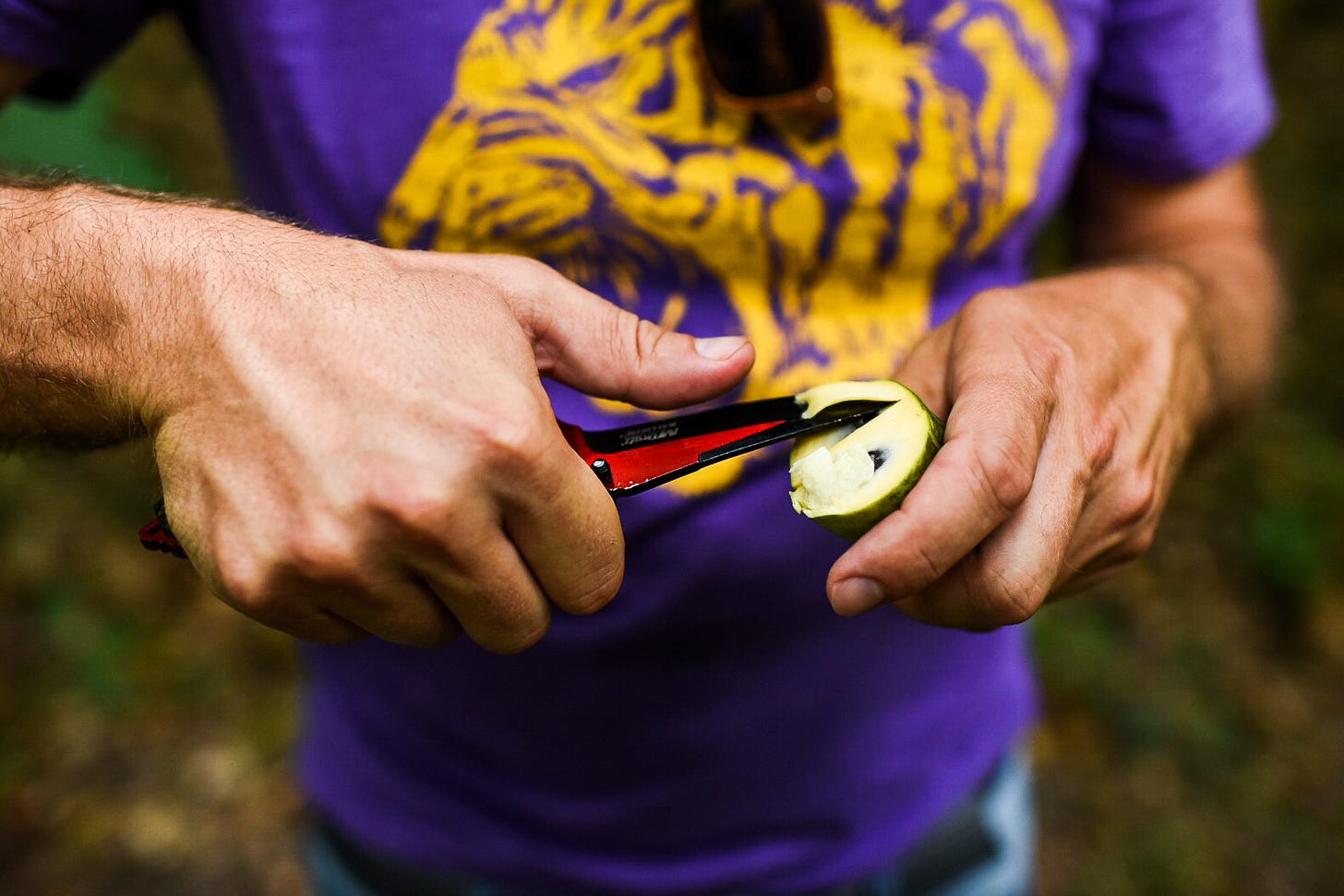
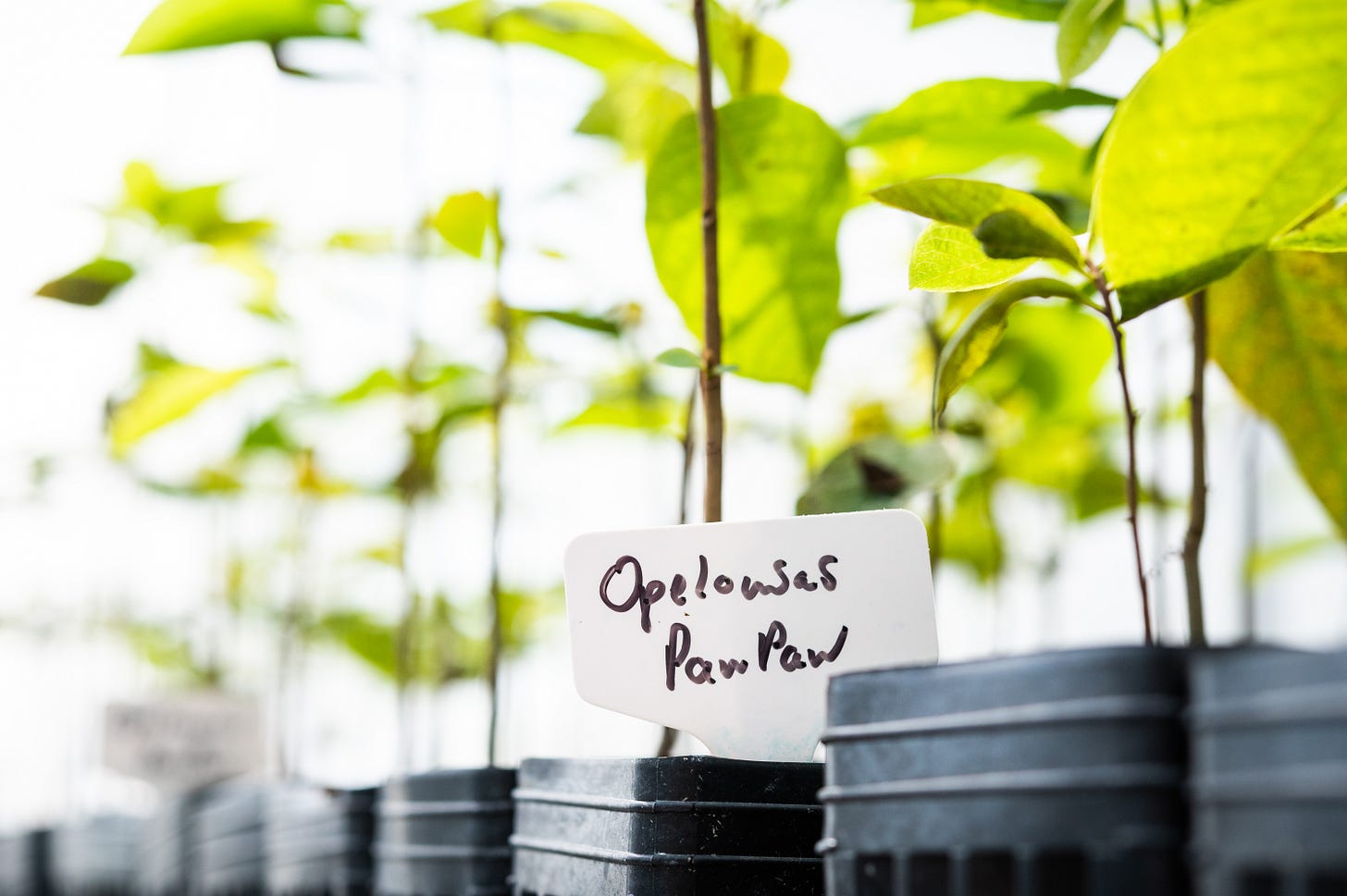

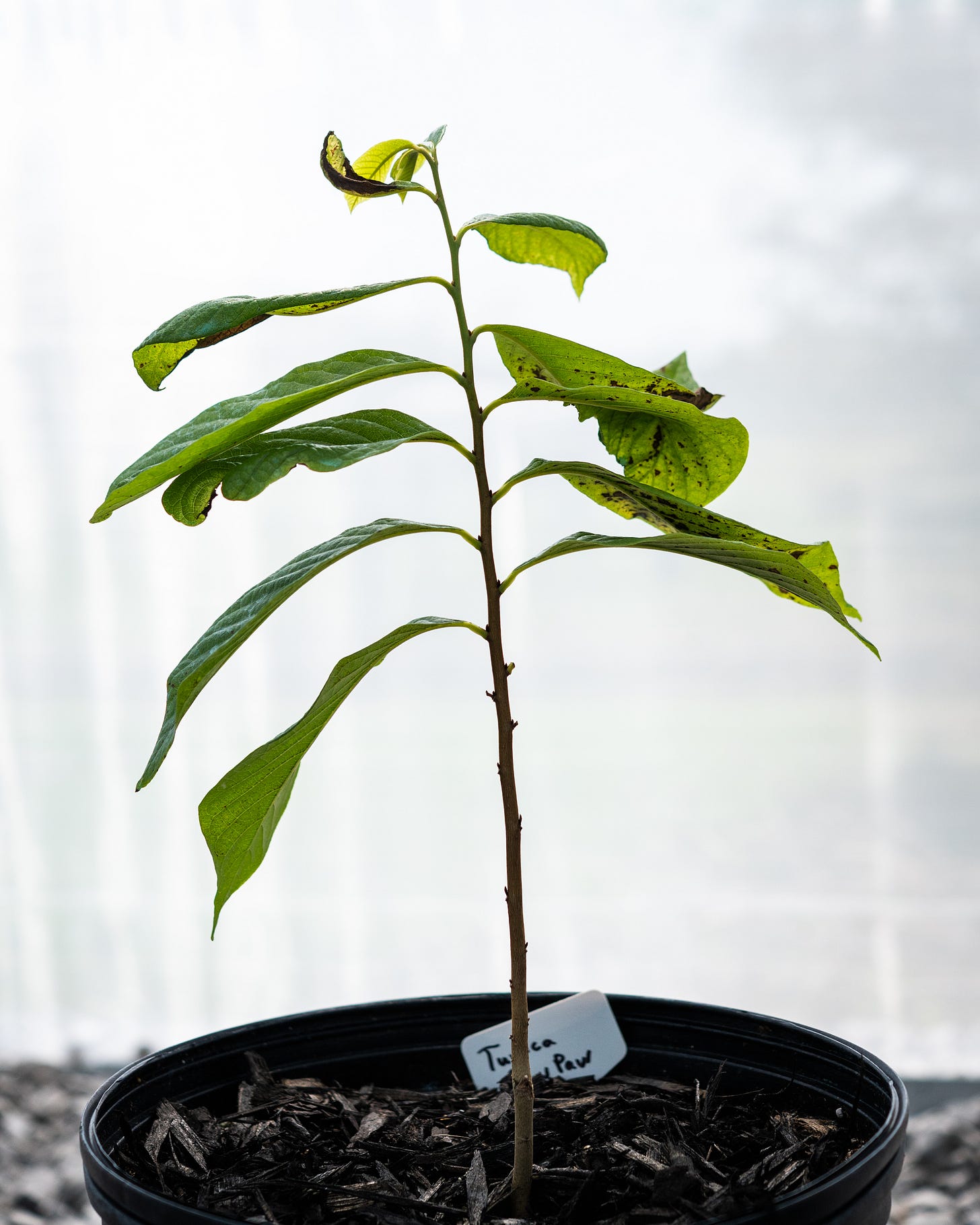
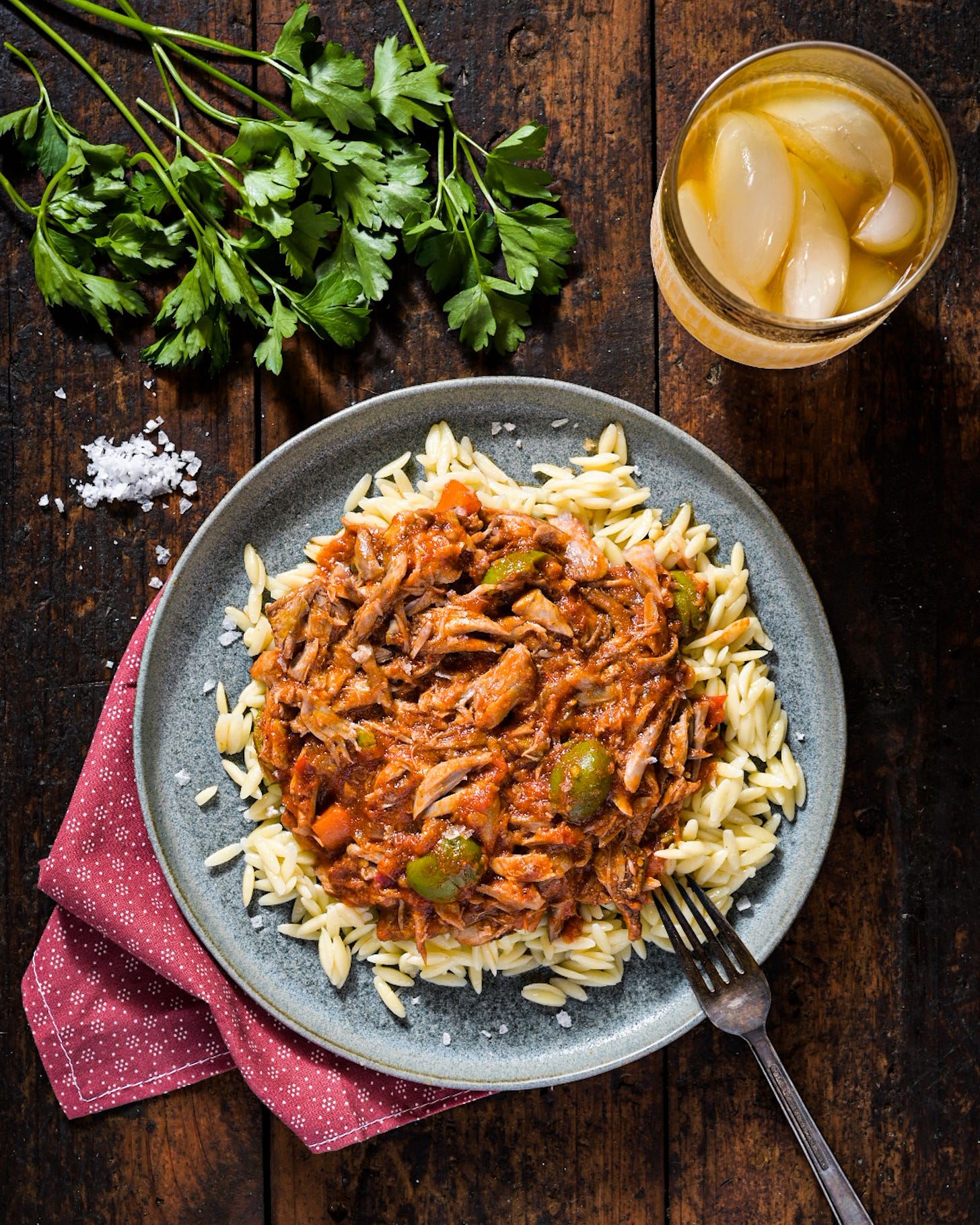
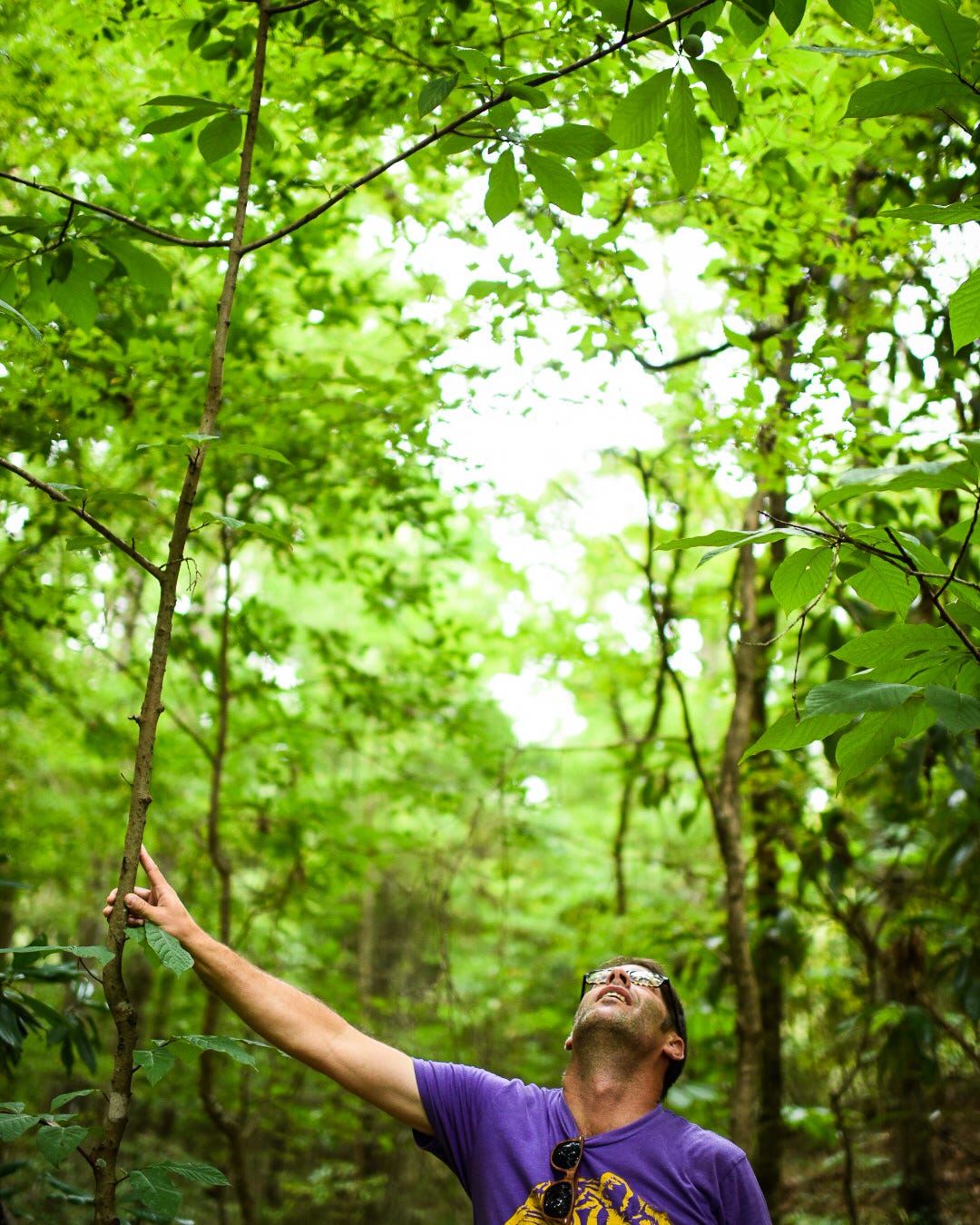
I love it! Thank you James.
EXTRA great edition of the BA, James. Got some much-needed chuckles from your dry wit. Thank you! ❤️